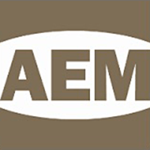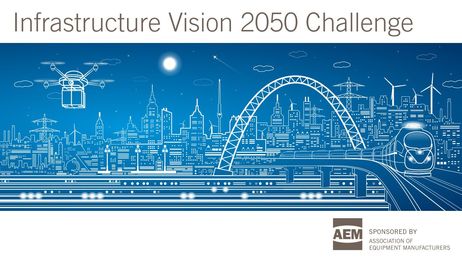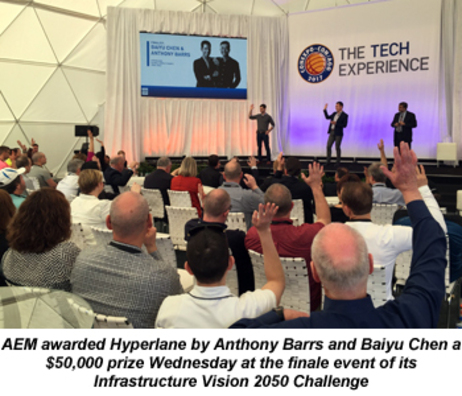Open Innovation Solutions for Aging US Infrastructure
Published Aug-14-17Breakthrough:
A new infrastructure system that could support autonomous vehicles travelling at high speeds.
Company:
Association of Equipment Manufacturers, United States
The Story:
 On August 1 2007 during the evening rush hour, the I-35W Mississippi River Bridge in Minneapolis suddenly collapsed, killing thirteen people and injuring many more. The cause was later discovered to be a flaw in its design. According to investigators, a metal plate that served as a junction of several girders, was too thin.
On August 1 2007 during the evening rush hour, the I-35W Mississippi River Bridge in Minneapolis suddenly collapsed, killing thirteen people and injuring many more. The cause was later discovered to be a flaw in its design. According to investigators, a metal plate that served as a junction of several girders, was too thin.The defective bridge is part of a wider story, that of the USA's aging infrastructure, most of which was put in place in the first half of the 20th century. In some areas, maintenance and rebuilding have been sporadic, which is worsening age-related damage.
According to the Association of Equipment Manufacturers (AEM), the country’s infrastructure is at a crisis point. Aging and crumbling roads, thousands of structurally deficient bridges and congestion on urban highways are just some of the problems that need to be addressed. Here are a few statistics that make for grim reading:
• 11% of the nation's rural bridges are structurally deficient.
• A pedestrian is killed every two hours.
• The average American spends 38 hours a year stuck in traffic.
As parts of the infrastructure system are coming to the end of their useful life, urgent solutions are needed now.
Searching for Disruptive Infrastructure Solutions
To find disruptive solutions to the infrastructure challenges that confront the United States, AEM launched a global open innovation contest, the Infrastructure Vision 2050 Challenge. Innovators were asked for their ideas for a transportation system that would carry people much more safely and efficiently than the current network.
The finale for the competition was held in Las Vegas, at CONEXPO-CON/AGG’s a huge international convention for the construction industries. Five finalists took part in a Shark Tank-style event in front of a live audience.
Novel Solutions
The winner of the third and final phase of the contest was a concept called Hyperlane by University of California, Berkeley students Anthony Barrs and Baiyu Chen. It was a proposal to build a new infrastructure system that allows autonomous vehicles to travel at high speeds along existing roadways, and avoids congestion by surge pricing. A centralized computer would be in charge of everything and would communicate with each vehicle using emerging 5G technology. Drivers would pay extra to use lanes designated for autonomous vehicles, and once they enter them the central computer would take over. The winners picked up a check for $50,000.
Second place and a check for $35,000 was awarded to Peter Muller for a smART driverless vehicle system that would transport people in high-speed pods on a rail network, while Kevin Lu took home $15,000 for his adaptive pavement system that's designed to reduce congestion. This concept would change the resistance of pavement to slow down or speed up vehicles relative to each other.
"Their designs are a reminder of what’s possible when we democratize innovation and challenge innovators to see the world as it could be. It’s inspiring," said AEM president Dennis Slater.
Creating the Future
Although there's no word yet on how or if the winning ideas will be created, AEM stated in its contest FAQ that solutions generated by the challenge may contribute toward a new infrastructure platform as well as inspire others to think differently about US infrastructure.
Next Story »



